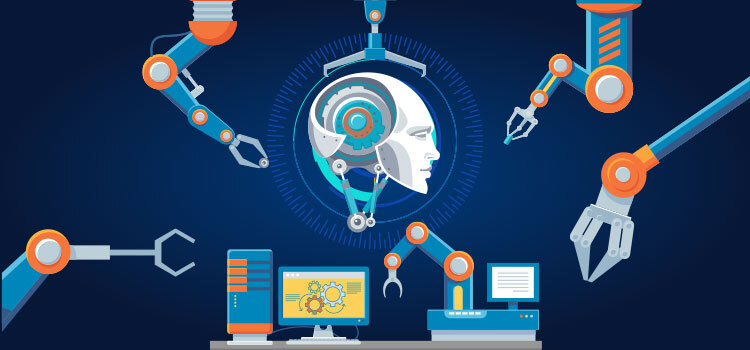Many companies are pursuing digital transformation initiatives for a competitive edge and operational benefits such as greater efficiency and lower costs. One of the hottest trends for digital transformation is Intelligent Process Automation (IPA) that enables hyperautomation or end-to-end automation of processes with minimal human intervention.
Why is IPA Being Widely Adopted?
By 2022, 99% of all digital data will be unstructured and the volume of this data is increasing at a rate of 62% YoY. As many businesses in a range of industries must process unstructured data in repetitive processes on a day-to-day basis, leveraging IPA for this purpose allows elimination of manual effort with greater efficiency, scalability, and cost savings. IPA harnesses both Artificial Intelligence (AI) and Robotic Process Automation (RPA), surpassing the limitations of legacy systems that cannot process unstructured data – a great deal of manual intervention was required with such technology.
Research by Gartner indicates that by 2022, 65% of organizations will introduce IPA that leverages Machine Learning (ML) and Natural Language Processing (NLP). In addition, hyperautomation is the top trend listed in Gartner’s Top 10 Strategic Trends for 2020.
The rise of IPA spans multiple industries such as logistics, shared services, hospitality, healthcare, BFSI and more. It also spans myriad functions such as document-intensive processes that require automated document understanding – check processing, invoice processing, form classification and so on, as well as customer service in conversational formats through email response and intelligent chatbots. AI’s Machine Learning capabilities allow applications to learn and improve over time, while their Natural Language Processing (NLP) capabilities provide a user-friendly, conversational format for customer service and queries that boost customer satisfaction.
In addition to operational improvements, enterprise-wide intelligent automation allows processes to be streamlined and re-engineered for greater efficacy that provides significant business value. Many businesses see ROI that is in the triple-digit range from IPA implementation. So, there is definitely a significant payoff for leveraging IPA for your enterprise.
Implementing IPA for Your Enterprise
While many businesses are eager to get their IPA use cases up and running, it takes time to successfully integrate IPA technology to their current processes. Moreover, many businesses make the crucial mistake of failing to properly identify feasible IPA use cases which can often lead to a dead-end project. So, it is imperative to take some time to identify IPA use cases for your organization and processes, clearly mapping required outputs, metrics and goals expected from IPA implementation and so on. This stage also entails figuring out how you can improve processes through re-design. It may require re-prioritization of tasks in processes for optimization of process flow. Thus, implementing IPA is a project that requires careful assessment and deliberation on your use cases to ensure successful adoption and maximum value.
When developing your IPA use case, ensure that it provides value that is in alignment with strategic goals. For instance, an IPA solution that automates retrieving in-depth customer data from the CRM along with details of the quote for the customer’s request can help the sales team close faster and boost sales. This operational improvement supports your human employees in achieving strategic goals.
Consider Potential Barriers to Change
Despite the benefits of IPA implementation, a change such as this can face some barriers within the organization. In order to successfully adopt this technology, you must take measures to mitigate these obstacles.
A sudden technological change can necessitate technological training and education on its benefits to gain cultural acceptance. Assigning the right team members and delegating internal responsibilities to oversee stages of the use case will also assure smoother implementation.
Although the RPA component of IPA enables connection of legacy systems, you may need to consider upgrading systems for maximum value.
Last but not least, choose the right implementation partner for your IPA use cases. It’s a good idea to select someone with a proven track record and experience illustrated by customer success stories. In addition to technical strength, you must also work with an implementation partner who provides clear communication and support at every stage.
Despite the challenges that come with an IPA integration they are not insurmountable and the rewards are felt across all departments. If you’re considering integrating AI into your organization, you can check out our blog that outlines 7 Steps to Identify an AI Use Case.
Gain inspiration from these 9 Areas That Are Adopting Intelligent Automation for Typical Business Processes and see if any of them can leverage digital business transformation for you.
If you’d like to explore opportunities where your business can benefit from IPA implementations for hyperautomation, the Rapid Acceleration Partners team would be glad to help. Our next-gen, AI-powered content intelligence platform RAPFlow enables full lifecycle AI orchestration on a single platform. When used in tandem with our RPA solution RAPBot, it provides end-to-end process automation capabilities that can be deployed in just weeks. You can even build your own use case and the platform can easily integrate with your existing systems. Book a demo to get a more detailed understanding of how our products can transform your business.




